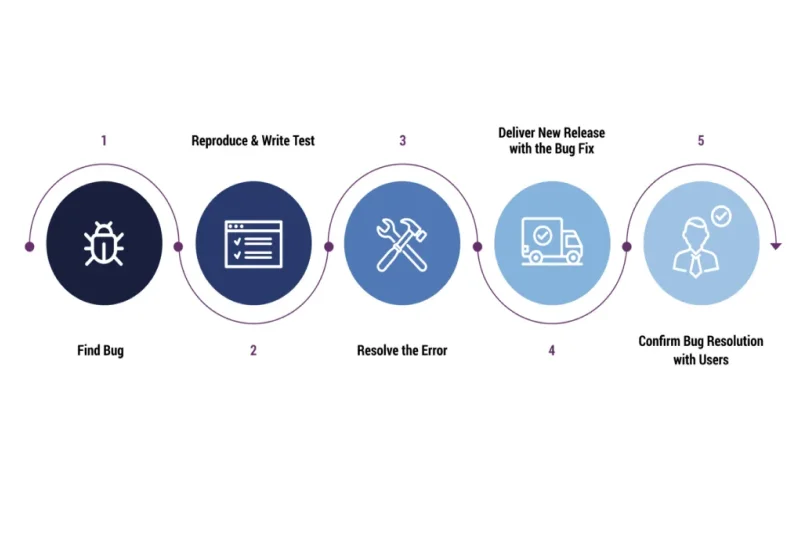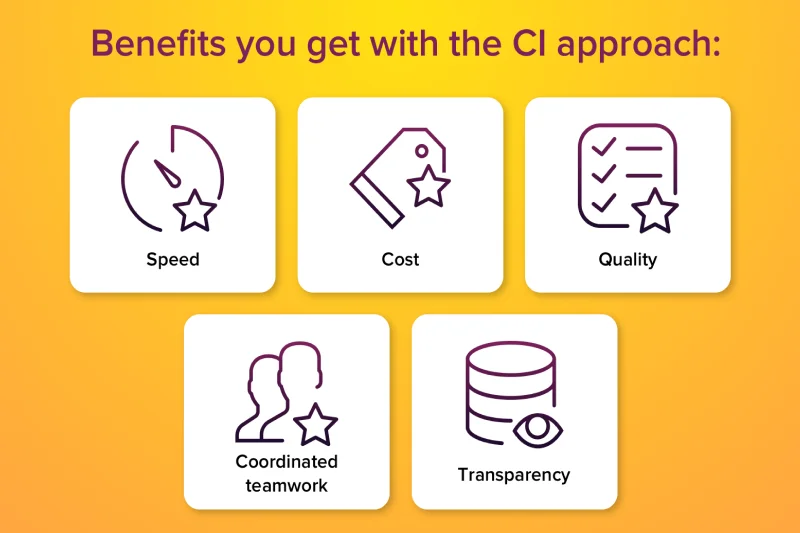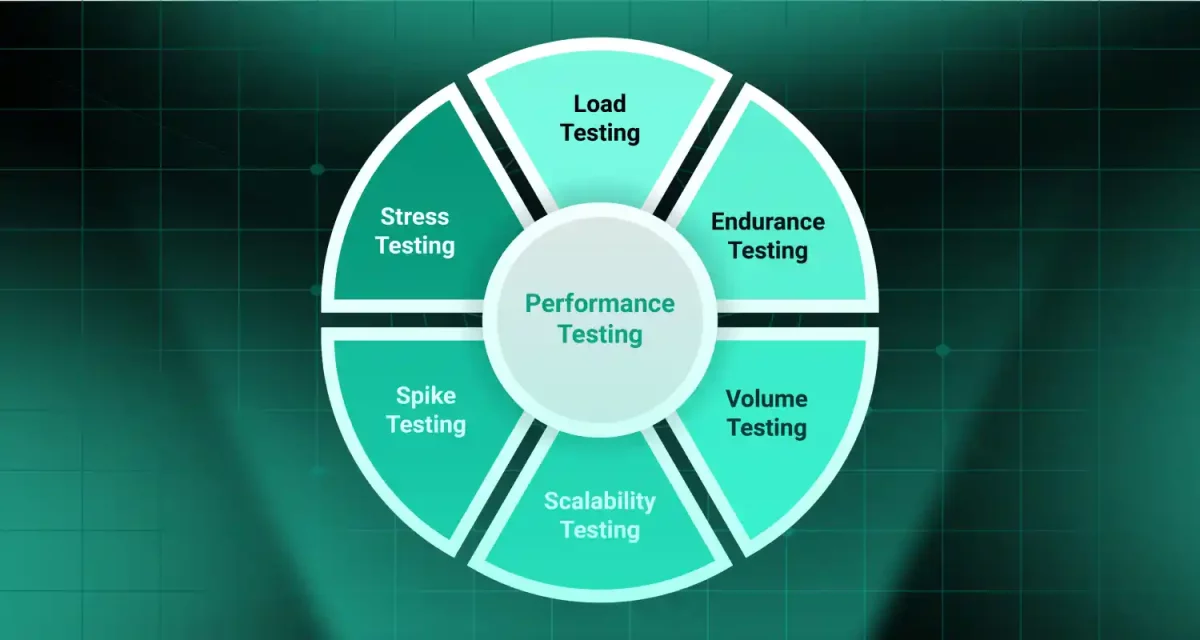
Continuous integration (CI) is a software development practice where developers regularly merge their code changes into a shared repository. Each integration is then automatically verified by running builds and tests. This helps teams detect errors early and fix them quickly.
In today’s fast-paced development world, CI plays a vital role. It supports a smoother software development lifecycle, reduces risks, and improves team collaboration. By using automated build pipelines and version control systems, CI allows teams to release high-quality software faster and more reliably.
As part of broader DevOps practices, continuous integration in software development has become essential for modern teams. It encourages frequent testing, better code quality, and faster feedback—benefits that align well with agile methodology and automated testing strategies. In the following sections, we’ll explore the importance of CI, its role in DevOps, key benefits, common challenges, and top tools like Jenkins, Travis CI, and CircleCI.
1. What is continuous integration in software development?
Continuous integration in software development is a practice where developers frequently merge their code changes into a shared repository. Each time new code is added, it’s automatically tested and built. This helps teams catch errors early and keep the project running smoothly.

At its core, continuous integration is about automating the integration process in the software development lifecycle. Instead of waiting days or weeks to combine code from different team members, CI makes it possible to integrate changes multiple times a day. This reduces the risk of conflicts and makes it easier to identify problems as soon as they occur.
One of the key components of this approach is the use of automated build pipelines. These pipelines automatically compile the code, run unit tests, and check for errors each time a developer pushes changes. This automation helps ensure the codebase remains stable, even as the team moves quickly.
In traditional workflows, integration is often manual and happens late in the process, which can lead to major issues during testing or deployment. But with continuous integration, those risks are minimized. Developers receive instant feedback on their code, and bugs can be addressed right away before they affect other parts of the system.
Overall, continuous integration in software development helps maintain a consistent and reliable codebase. It saves time, reduces stress, and supports a more efficient, collaborative way of building software. It’s especially valuable in fast-paced environments where teams need to deliver updates quickly without sacrificing quality.
Read more >>>> Iterative and Incremental Development: Transform Your Workflow!
2. What is continuous integration in DevOps?
Continuous integration in DevOps is a key part of how modern software teams deliver faster, more reliable software. It fits into a larger set of DevOps practices that focus on breaking down the barriers between development and operations teams.

In traditional development, developers write code and hand it off to operations for deployment. This handoff often causes delays, miscommunication, and bugs. But with continuous integration, those two teams work together from the start. CI becomes the foundation for building trust and collaboration.
Within the DevOps practices lifecycle, continuous integration ensures that every code change is automatically built, tested, and validated before moving forward. This reduces errors and helps keep the codebase in a deployable state at all times. Developers push code regularly, and automated systems instantly check that everything works. If something breaks, the team knows immediately.
This process makes life easier for operations teams, too. They don’t have to worry about unstable code or last-minute fixes. Instead, they receive clean, tested builds that are ready for the next stages of deployment, such as continuous delivery or continuous deployment.
By promoting frequent integration and quick feedback, continuous integration improves communication, reduces friction, and supports faster delivery. It’s a core part of any successful DevOps workflow, helping teams move quickly while keeping quality high.
3. Why is continuous integration important?
Continuous integration is a vital practice in modern software development. One of its biggest strengths is the early detection of integration issues. When developers regularly merge their code, the system automatically runs tests and builds. This helps catch bugs and conflicts early—before they affect the rest of the codebase. Fixing problems at this stage is much faster and easier than discovering them later during deployment.
Read more >>> Waterfall Model in Software Development | Definition, Phases, Advantages & Disadvantages

Another key benefit is improved code quality and collaboration. With CI, every code change goes through a series of automated tests. Developers get instant feedback, which encourages cleaner, more reliable code. It also improves team communication. Everyone can see what’s been changed, tested, and approved. This shared visibility helps developers, testers, and operations teams stay aligned.
CI also leads to faster release cycles and deployment. Because code is always being tested and integrated, teams can release updates more frequently and with greater confidence. You no longer need to wait for a big release day—features and fixes can be delivered continuously, with less risk.
In short, continuous integration makes development more predictable, efficient, and collaborative. It’s not just about writing code faster—it’s about delivering better software, more often.
4. Benefits of continuous integration
There are many clear benefits of continuous integration that make it a must-have in modern software teams. One of the biggest advantages is enhanced code quality through automated testing. Every time a developer commits code, automated tests run to check for errors. This helps catch bugs early, making sure only clean, working code moves forward.

Another major benefit is reduced integration problems and conflicts. In traditional workflows, merging code at the end of a sprint can lead to big, messy issues. But with CI, changes are integrated and tested frequently, which fits perfectly with agile methodology. This approach keeps the project moving forward smoothly and avoids last-minute surprises.
Build automation is another key strength. With CI tools in place, the entire process of compiling code, running tests, and generating builds happens automatically. This accelerates development cycles and frees up the team to focus on writing features instead of fixing broken builds.
CI also promotes increased transparency and collaboration among team members. Everyone has access to the latest code, test results, and build status. This open flow of information makes it easier for teams to communicate, make decisions quickly, and stay aligned.
In short, continuous integration improves speed, quality, and teamwork. It creates a strong foundation for delivering reliable software in a fast, flexible, and efficient way.
Read more >>> 8 Types of Software Development in 2025
5. Risks and challenges of continuous integration
While continuous integration offers many benefits, it also comes with its own set of challenges. Understanding the risks of continuous integration is important before fully adopting it into your development process.

One of the first hurdles is the initial setup and maintenance efforts. Setting up a reliable CI system requires time, tools, and expertise. Teams need to configure automated build pipelines, integrate tools, and ensure all processes work smoothly together. Without proper setup, CI can actually slow teams down instead of helping them.
Another challenge is the dependence on comprehensive automated test suites. For CI to be effective, automated tests must cover most parts of the codebase. If your test coverage is weak or outdated, issues may go unnoticed even though the build passes. Building and maintaining good test suites takes time and ongoing effort.
There’s also the risk of build failures and troubleshooting complexities. As more developers push changes frequently, builds can fail more often. Tracking down the cause of a broken build can be tricky, especially in larger teams or complex systems. If not managed well, this can disrupt workflows and cause frustration.
A common issue is managing incomplete or untested code integrations. Even with a CI process, developers might commit code that isn’t fully ready. This can lead to unstable builds. That’s why using strong version control systems and clear branching strategies is crucial. It helps teams control what gets merged and when, reducing the risk of unfinished work breaking the pipeline.
In summary, while continuous integration boosts speed and quality, it also demands careful planning, strong version control, and well-maintained test environments. By recognizing these risks early, teams can avoid setbacks and make the most out of their CI journey.
6. Conclusion
Continuous integration has become a must-have in modern software development. It helps teams catch issues early, improve code quality, and release updates faster. Whether you’re working in a small startup or a large enterprise, CI brings structure and speed to your workflow.
By integrating code often, using automated build pipelines, and following strong DevOps practices, teams can avoid last-minute surprises and reduce risks. It also makes collaboration smoother between developers, testers, and operations teams.
If you’re aiming for faster, safer, and more efficient software delivery, adopting continuous integration is a smart move. It’s not just a tool—it’s a mindset that helps build better software, one change at a time.



